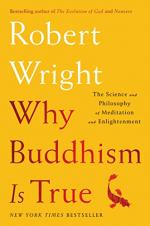
|
| Name: _________________________ | Period: ___________________ |
This quiz consists of 5 multiple choice and 5 short answer questions through Chapters 7-9.
Multiple Choice Questions
1. What do psychologists call the condition of "being stuck" in the natural human cycle of ultimately futile pleasure-seeking?
(a) The great illusion.
(b) The never-ending spiral.
(c) The hedonic treadmill.
(d) The hamster wheel.
2. What is NOT a concern the author attributes to the process of natural selection?
(a) The pleasure associated with the goals should not last forever.
(b) Achieving the goals should bring pleasure.
(c) There should be more of a focus on the immediate pleasure than on the way it will soon dissipate.
(d) Aesthetic considerations.
3. The Buddha stated that what emotion has a "poisoned root and honeyed tip" (30)?
(a) Anger.
(b) Ecstasy.
(c) Pride.
(d) Jealousy.
4. What types of insects were making noise outside of the author's window on the fifth night of his first meditation retreat?
(a) Katydids.
(b) Crickets.
(c) Locusts.
(d) Cicadas.
5. The Buddha said that engagement is the product of a what?
(a) A power.
(b) A feeling.
(c) A lust.
(d) A shame.
Short Answer Questions
1. Who is said to have remarked that our faculties of reason are controlled by passions, otherwise known as feelings, according to the author?
2. Though the author admits that there are paradoxes within Buddhism, he says that there are also paradoxes within which branch of science?
3. The author states that "modules seem to have the ability to recruit" (130) what on behalf of their goals?
4. With what Buddhist tradition is Yongey Mingyur Rinpoche associated?
5. When the author describes the colors of his hallucination during meditation, what colors does he name?
|
This section contains 275 words (approx. 1 page at 300 words per page) |

|




